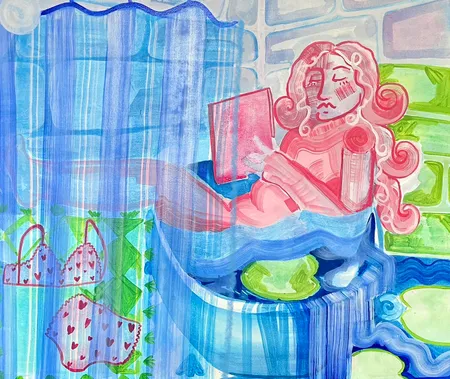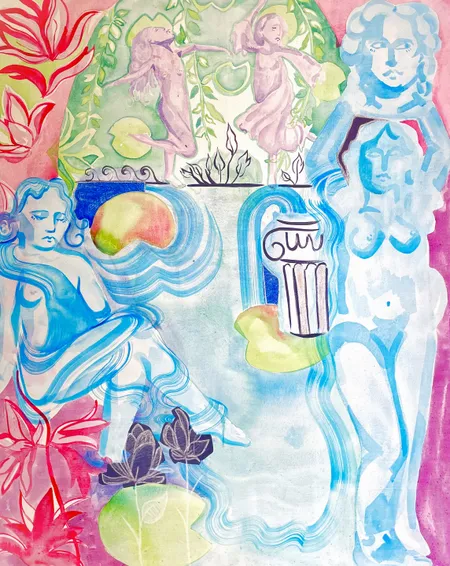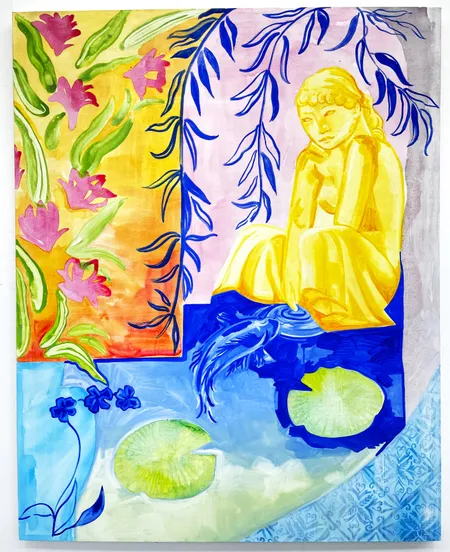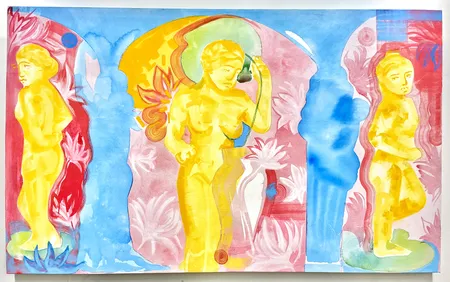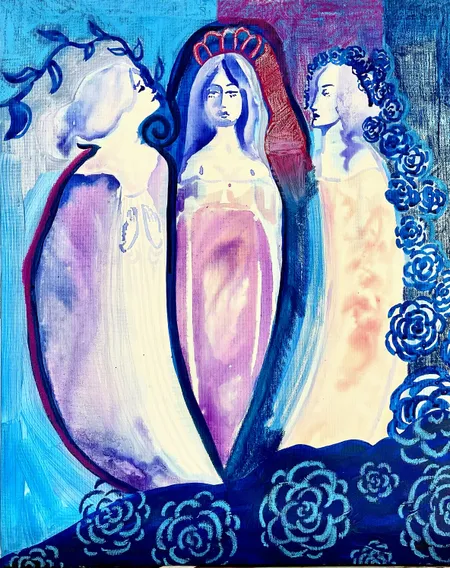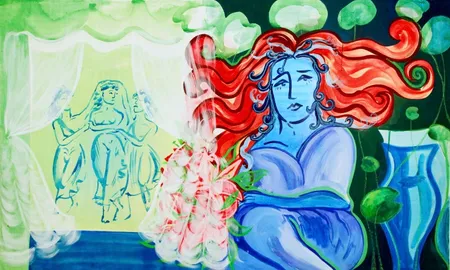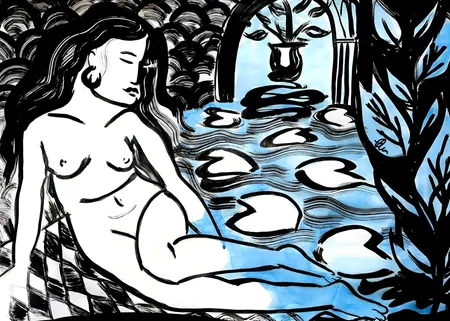Thea Schultz
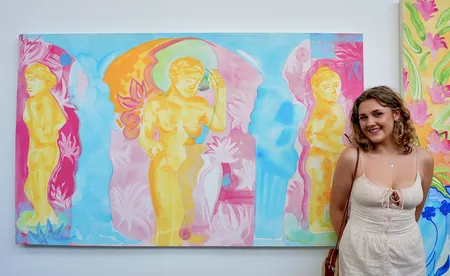
Degree: Fine Art
University: Arts University Bournemouth
Graduation Year: 2024
New Blood Art Commentary
Thea Schultz’s work reimagines classical representations of women, reclaiming the autonomy of women who have been cast aside as passive muses. Drawing heavily from mythology, art history, and literature, Schultz creates paintings that elevate her subjects to positions of empowerment and agency. By referencing ancient Greek and Roman statues alongside the symbolic language of European art history, she presents women as active, divine figures inhabiting symbolic, multi-layered worlds.
Her paintings engage in a thoughtful dialogue with works like Millais’s Ophelia. Where Ophelia, driven mad by grief, becomes a symbol of fragility and tragedy, Schultz transforms water and natural motifs such as lily pads into symbols of strength, refuge, and renewal. These elements are no longer sites of loss but spaces of empowerment, offering her subjects sanctuary and harmony with their surroundings. In doing so, Schultz subverts traditional narratives, replacing passivity with agency and despair with renewal.
Schultz’s subjects radiate in golds and blues, evoking the divine and the contemplative. Through her process-led ink drawings and vivid, spontaneous applications of paint, she explores the transformative potential of these women, embedding them within environments that feel both timeless and relevant. Her work challenges viewers to reconsider the role of women in art history, offering an alternative vision that celebrates their power, autonomy, and connection to nature.
Artist Statement
Thea Schultz graduated in 2024 with a first class fine art degree from Arts University Bournemouth. Alongside leading the teaching programme at Art-K studio in Reading, Schultz has exhibited recently at Turps Gallery, London (2024) as-well as in her graduate show at Arts University Bournemouth (2024).
Group Exhibitions
(2024) Monumental Women, The Avenue, Bournemouth
(2024) The Graduate Show, Arts University Bournemouth, Bournemouth
(2024) You Crazy Child, Turps Gallery, London
(2022) Fair Play, Little Theatre Bournemouth, Bournemouth
(2021) Young Creatives, Modern Art Oxford, Oxford
(2021) From Our Hands, Arts University Bournemouth, Bournemouth
Competitions, Prizes & Awards
(2019) Articulation Prize Nominee
(2024) Freelands Painting Prize Nominee
(2024) New Blood Art Emerging Art Prize Nominee
